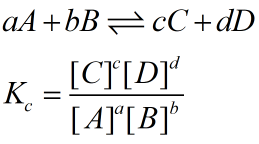Thermochemistry
Thermochemistry can be considered as a branch of thermodynamics that deals with the connections between warmth, work, and various types of energy, formed because of different synthetic and actual cycles. Thermochemistry describes the energy changes that occur as a result of reactions or chemical changes in a substance.
Exergonic Reaction
The term exergonic is derived from the Greek word in which ‘ergon’ means work and exergonic means ‘work outside’. Exergonic reactions releases work energy. Exergonic reactions are different from exothermic reactions, the one that releases only heat energy during the course of the reaction. So, exothermic reaction is one type of exergonic reaction. Exergonic reaction releases work energy in different forms like heat, light or sound. For example, a glow stick releases light making that an exergonic reaction and not an exothermic reaction since no heat is released. Even endothermic reactions at very high temperature are exergonic.
![**Equilibrium Constant Expression for the Reaction**
Write the equilibrium-constant expression for the reaction shown in terms of \([A]\), \([B]\), \([C]\), and \([D]\).
\[3 \text{A}(g) + \text{B}(g) \rightleftharpoons 2 \text{C}(g) + 2 \text{D}(g)\]
Note that \(K_c\), which is sometimes symbolized as \(K\) or \(K_{eq}\), denotes that the equilibrium constant is expressed using molar concentrations. For this question, \(K_c\) means the same thing as \(K\) and \(K_{eq}\).
\[K_c = \]
**Explanation**: The reaction provided is a balanced chemical equation. You need to write the equilibrium constant expression, \(K_c\), using the concentrations of the products and reactants. The general formula is:
\[K_c = \frac{{[\text{C}]^c [\text{D}]^d}}{{[\text{A}]^a [\text{B}]^b}}\]
where \(a\), \(b\), \(c\), and \(d\) are the stoichiometric coefficients from the balanced equation. In this case:
\[K_c = \frac{{[\text{C}]^2 [\text{D}]^2}}{{[\text{A}]^3 [\text{B}]}}\]](/v2/_next/image?url=https%3A%2F%2Fcontent.bartleby.com%2Fqna-images%2Fquestion%2Ff32c3ee5-84ad-4b8f-a5ee-9f2098075ae5%2F388fe3c6-d480-48da-b13e-b1cbef21eb41%2Fc1xlvcg_processed.jpeg&w=3840&q=75)
Equilibrium constant is defined as the ratio of product of concentration of products to that of product of concentration of reactants raised to concentration power.
Consider a general chemical equilibrium, the equilibrium constant expression is given as,

Step by step
Solved in 2 steps with 2 images









